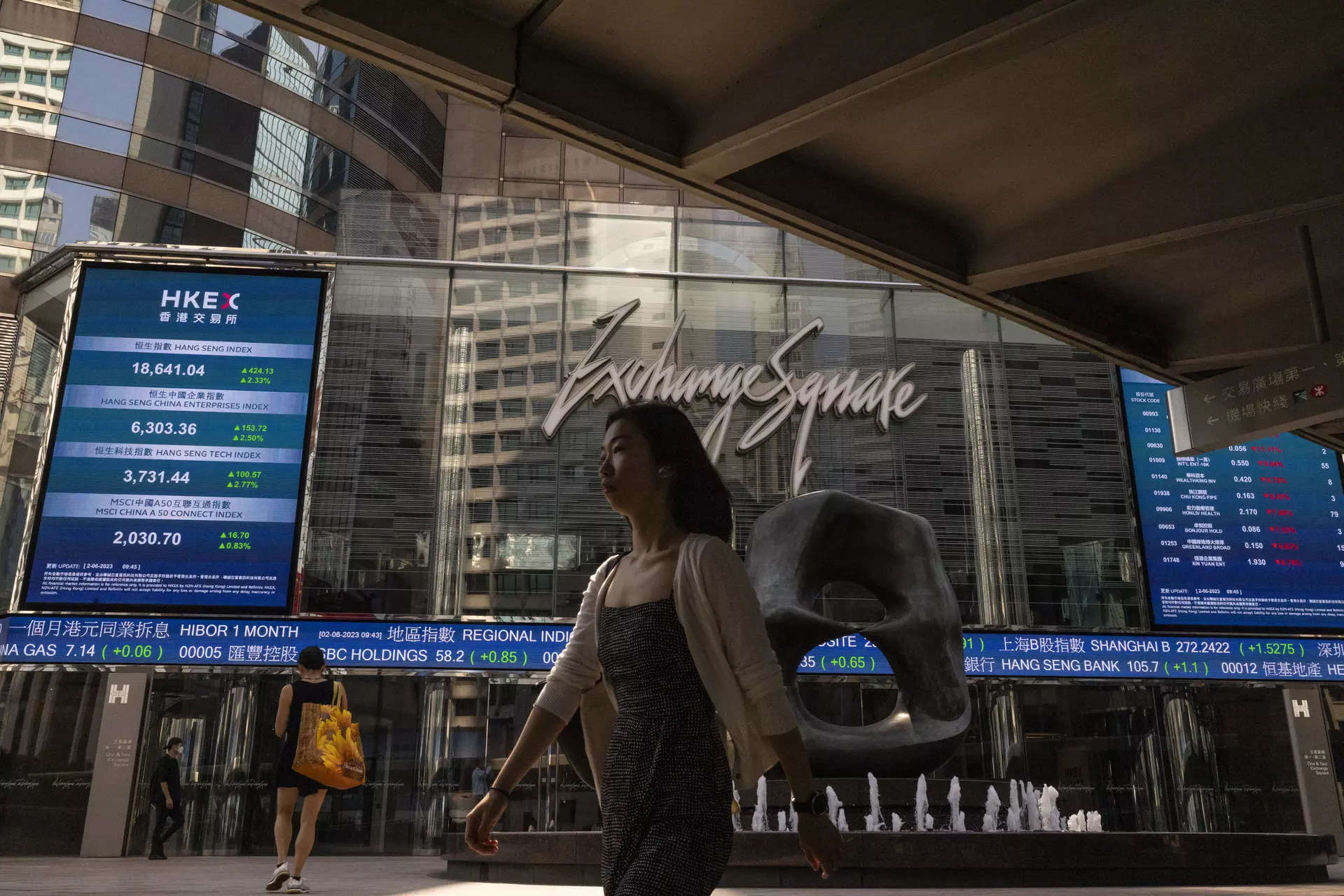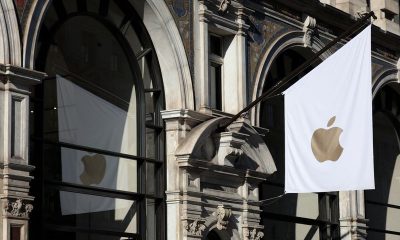Economy
U.S. stocks end a tad higher as Tesla rallies

The S&P 500 closed higher on Friday but off session highs, as a Tesla (NASDAQ:TSLA) rally failed to galvanize the broader market on the eve of the Federal Reserve’s policy meeting and inflation data next week.
Tesla Inc shares climbed 4.06%, clinching their longest winning streak since January 2021, after General Motors Co (NYSE:GM) agreed to use the company’s Supercharger network. GM shares rose 1.06%.
The benchmark S&P 500 built on Thursday’s 20% rise from its Oct. 12 finishing low, heralding the start of a new bull market as defined by some market participants.
“It’s maybe the most hated bull market in the history of bull markets,” said Tim Holland, chief investment officer of investment platform Orion OCIO.
“Sentiment was terribly depressed going into year-end and still remains on the bearish side.”
The S&P 500 gained 4.93 points, or 0.11%, at 4,298.86, taking this week’s advance to 0.38% and extending its winning streak to four weeks, the longest since the July-August 2022 period. The Nasdaq Composite notched its seventh straight week of gains, adding 20.62 points, or 0.16%, to 13,259.14 on the day and 0.13% on the week. The Dow Jones Industrial Average rose 43.17 points, or 0.13%, to 33,876.78, for a weekly gain of 0.33%.
A megacap stocks rally, better-than-expected earnings season and expectations that the Fed was nearing the end of its rate-hiking cycle have supported Wall Street this year despite concerns about a looming recession and sticky inflation.
Shares in tech companies including Apple Inc (NASDAQ:AAPL), Advanced Micro Devices (NASDAQ:AMD) and Nvidia (NASDAQ:NVDA) Corp rose between 0.22% and 3.20% after retreating earlier this week.
Traders see a 72% chance of the U.S. central bank holding interest rates at the current 5%-5.25% range in its June 13-14 policy meeting, according to CMEGroup’s Fedwatch tool.
“The overall tone of the market is based on the idea that the Fed will pause its increases,” said Rick Meckler, partner at Cherry Lane Investments. “As it pauses, the broader market will start to rally and maybe catch up with the large-cap tech stocks that have led the way up until now.”
Consumer prices data on Tuesday will help shape expectations around further moves by the Fed, with traders already pricing in a 50% chance of another 25-basis-point rate hike in July.
The CBOE Volatility index, commonly known as Wall Street’s fear gauge, sank to the lowest level since February 2020 before regaining some ground.
Target Corp (NYSE:TGT) slipped 3.26% after Citi downgraded the big-box retailer to “neutral,” saying sales could fall further this year due to economic challenges.
Adobe (NASDAQ:ADBE) Inc rose 3.41% after Wells Fargo (NYSE:WFC) upgraded it to “overweight,” saying the Photoshop software maker was poised to benefit from the generative AI boom.
Netflix Inc (NASDAQ:NFLX) gained 2.60% following a report that the streaming giant’s subscriptions jumped after its crackdown on password sharing.
Declining issues outnumbered advancing ones on the NYSE by a 1.49-to-1 ratio; on Nasdaq, a 1.84-to-1 ratio favored decliners.
The S&P 500 posted 15 new 52-week highs and five new lows; the Nasdaq Composite recorded 84 new highs and 53 new lows.
Economy
Russian central bank says it needs months to make sure CPI falling before rate cuts -RBC


© Reuters. Russian Central Bank Governor Elvira Nabiullina attends a news conference in Moscow, Russia June 14, 2019. REUTERS/Shamil Zhumatov/File Photo
MOSCOW (Reuters) – Russia’s central bank will need two to three months to make sure that inflation is steadily declining before taking any decision on interest rate cuts, the bank’s governor Elvira Nabiullina told RBC media on Sunday.
The central bank raised its key interest rate by 100 basis points to 16% earlier in December, hiking for the fifth consecutive meeting in response to stubborn inflation, and suggested that its tightening cycle was nearly over.
Nabiullina said it was not yet clear when exactly the regulator would start cutting rates, however.
“We really need to make sure that inflation is steadily decreasing, that these are not one-off factors that can affect the rate of price growth in a particular month,” she said.
Nabiullina said the bank was taking into account a wide range of indicators but primarily those that “characterize the stability of inflation”.
“This will take two or three months or more – it depends on how much the wide range of indicators that characterize sustainable inflation declines,” she said.
The bank will next convene to set its benchmark rate on Feb. 16.
The governor also said the bank should have started monetary policy tightening earlier than in July, when it embarked on the rate-hiking cycle.
Economy
China identifies second set of projects in $140 billion spending plan


© Reuters. FILE PHOTO: Workers walk past an under-construction area with completed office towers in the background, in Shenzhen’s Qianhai new district, Guangdong province, China August 25, 2023. REUTERS/David Kirton/File Photo
SHANGHAI (Reuters) – China’s top planning body said on Saturday it had identified a second batch of public investment projects, including flood control and disaster relief programmes, under a bond issuance and investment plan announced in October to boost the economy.
With the latest tranche, China has now earmarked more than 800 billion yuan of its 1 trillion yuan ($140 billion) in additional government bond issuance in the fourth quarter, as it focuses on fiscal steps to shore up the flagging economy.
The National Development and Reform Commission (NDRC) said in a statement on Saturday it had identified 9,600 projects with planned investment of more than 560 billion yuan.
China’s economy, the world’s second largest, is struggling to regain its footing post-COVID-19 as policymakers grapple with tepid consumer demand, weak exports, falling foreign investment and a deepening real estate crisis.
The 1 trillion yuan in additional bond issuance will widen China’s 2023 budget deficit ratio to around 3.8 percent from 3 percent, the state-run Xinhua news agency has said.
“Construction of the projects will improve China’s flood control system, emergency response mechanism and disaster relief capabilities, and better protect people’s lives and property, so it is very significant,” the NDRC said.
The agency said it will coordinate with other government bodies to make sure that funds are allocated speedily for investment and that high standards of quality are maintained in project construction.
($1 = 7.1315 renminbi)
Economy
Russian central bank says it needs months to make sure CPI falling before rate cuts -RBC


© Reuters. Russian Central Bank Governor Elvira Nabiullina attends a news conference in Moscow, Russia June 14, 2019. REUTERS/Shamil Zhumatov/File Photo
MOSCOW (Reuters) – Russia’s central bank will need two to three months to make sure that inflation is steadily declining before taking any decision on interest rate cuts, the bank’s governor Elvira Nabiullina told RBC media on Sunday.
The central bank raised its key interest rate by 100 basis points to 16% earlier in December, hiking for the fifth consecutive meeting in response to stubborn inflation, and suggested that its tightening cycle was nearly over.
Nabiullina said it was not yet clear when exactly the regulator would start cutting rates, however.
“We really need to make sure that inflation is steadily decreasing, that these are not one-off factors that can affect the rate of price growth in a particular month,” she said.
Nabiullina said the bank was taking into account a wide range of indicators but primarily those that “characterize the stability of inflation”.
“This will take two or three months or more – it depends on how much the wide range of indicators that characterize sustainable inflation declines,” she said.
The bank will next convene to set its benchmark rate on Feb. 16.
The governor also said the bank should have started monetary policy tightening earlier than in July, when it embarked on the rate-hiking cycle.

 Forex3 years ago
Forex3 years agoForex Today: the dollar is gaining strength amid gloomy sentiment at the start of the Fed’s week

 Forex3 years ago
Forex3 years agoUnbiased review of Pocket Option broker

 Forex3 years ago
Forex3 years agoDollar to pound sterling exchange rate today: Pound plummeted to its lowest since 1985

 Forex3 years ago
Forex3 years agoHow is the Australian dollar doing today?

 Cryptocurrency3 years ago
Cryptocurrency3 years agoWhat happened in the crypto market – current events today

 World3 years ago
World3 years agoWhy are modern video games an art form?

 Commodities3 years ago
Commodities3 years agoCopper continues to fall in price on expectations of lower demand in China

 Economy3 years ago
Economy3 years agoCrude oil tankers double in price due to EU anti-Russian sanctions































